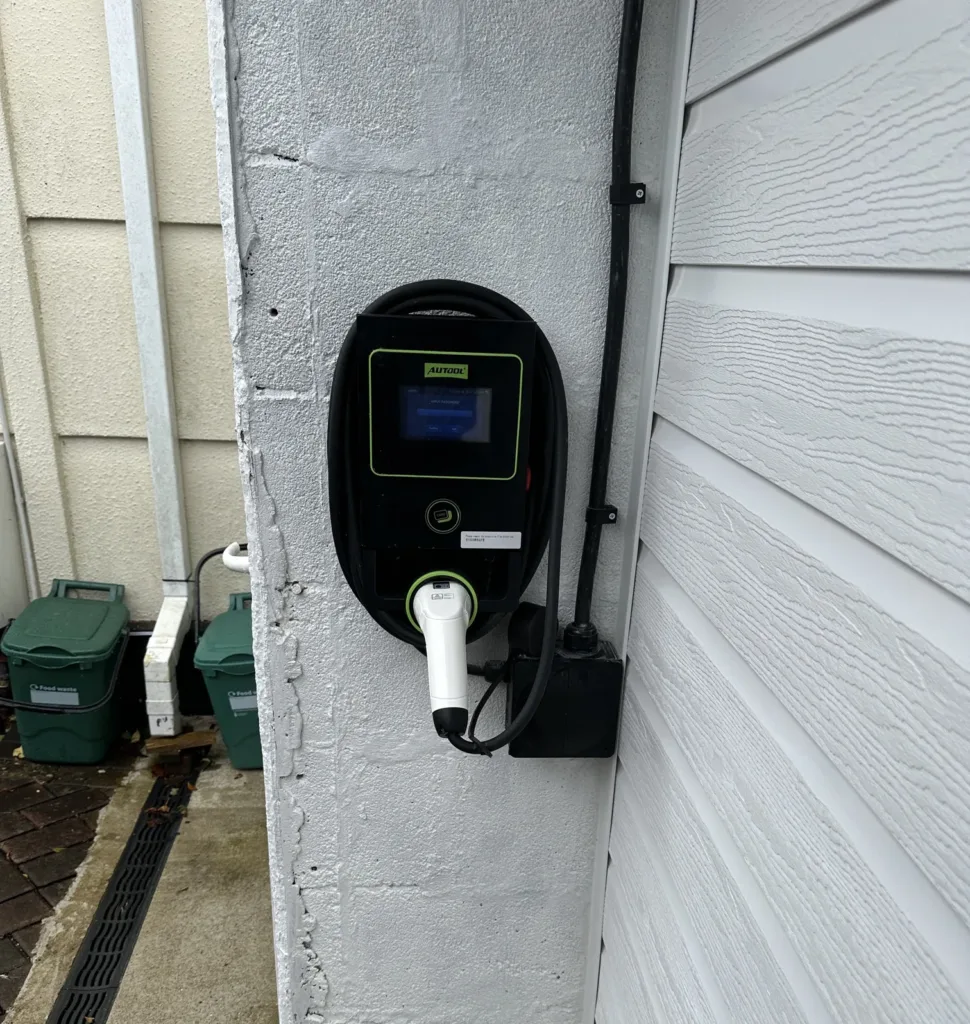An electric vehicle charger installation in Bodmin, connecting a client's own unit to their garage's electrical system. The project involved upgrading the existing consumer unit with dedicated circuit protection for safe and reliable home charging.

With more drivers making the switch to electric vehicles, having a convenient and safe charging point at home has become a common requirement. We recently worked on a project in Bodmin where the client had already sourced their own EV charge point and needed it professionally installed. The planned location was on an exterior wall, with the electrical supply originating from the consumer unit inside the garage.
Our work began with planning the cable route from the garage consumer unit to the final charger position, a total distance of about seven metres. We used 6mm EV-specific cable, which is designed to handle the sustained high load that EV charging demands. The cable was run neatly on the surface inside the garage, clipped directly to the wall for a secure and tidy finish before passing through the wall to the outside.
A critical part of any EV charger installation is making sure the existing electrical system can support it safely. The garage was powered by its own consumer unit, which required a couple of modifications. We upgraded the main switch RCD to a Type A model. This is a key safety measure, as EV chargers can produce a specific type of DC electrical fault current that standard RCDs may not detect. A Type A RCD is sensitive to this, offering appropriate protection.
In addition to the RCD upgrade, we installed a new 40A MCB (Miniature Circuit Breaker) to provide dedicated overcurrent protection just for the charger. This isolates the charger on its own circuit, preventing it from affecting other power outlets or lights in the garage and protecting the cable from overload.
Once the charger was mounted and all the wiring was complete, we carried out a full set of electrical tests on the new circuit. This process verifies that everything is working correctly, from polarity and earth fault loop impedance to the correct functioning of the new RCD. Upon successful completion of these tests, we issued an Electrical Installation Certificate (EIC) and handled the Building Control notification, formally documenting that the work complies with all relevant electrical and building regulations.









Ready to make a difference? Explore exciting career opportunities with us!